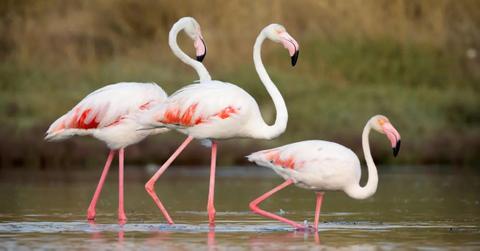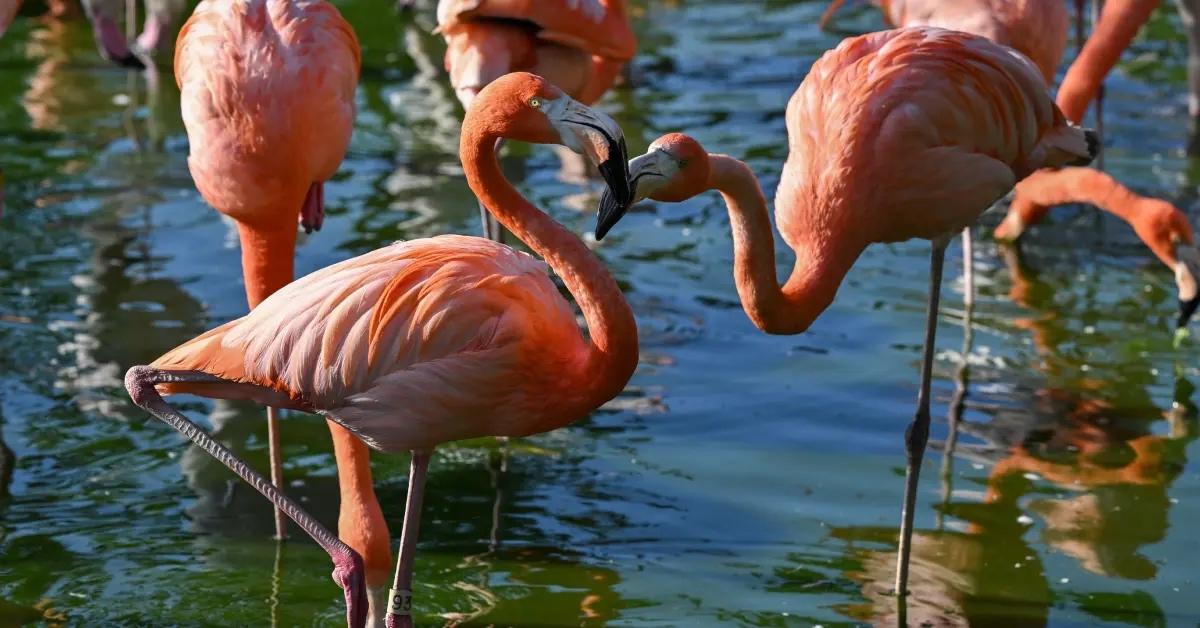Unveiling the Reason Why Flamingos Go From Pretty Pink to Pale White
The process of feeding chicks is one factor that can result in the temporary loss of pink color in flamingos.
Updated March 21 2024, 1:14 p.m. ET

Flamingos have captured our hearts for numerous reasons, and at the forefront is the enchanting allure of their unmistakable and vibrant pink hue. Their eye-catching color, coupled with their distinctively long necks and legs, never fails to captivate, ensuring they stand out effortlessly in any natural setting.
However, this dazzling pink spectacle isn't an everlasting affair, and various factors can play a role in the fading or loss of this vibrant pigment. Ready for the reveal? Read on to discover why flamingos bid adieu to their pink tint!

Why do flamingos lose their pink color?
Let's dive into the fascinating world of flamingos! These elegant birds get their signature pink color from carotenoid pigments found in their favorite foods, primarily algae and crustaceans. The magical transformation begins as beta-carotene breaks down in the flamingo's liver. From there, the pigments are deposited in the feathers, skin, and beak, creating that unique and oh-so-chic pink hue.
But as previously stated, the pink color is not permanent. Numerous factors come into play, leading to the fading or loss of a flamingo's breathtaking pink pigment.
For starters, flamingos undergo molting, where old feathers are shed and replaced by new ones. During this process, the pigments are not always retained, resulting in a temporary loss of color until the new feathers grow in.
Flamingos facing stress or health issues may have difficulty effectively metabolizing carotenoids, leading to a paler appearance due to less efficient pigment deposition. Additionally, environmental changes can affect the availability of specific pigments in the flamingo's habitat, ultimately impacting their coloration.
Female flamingos lose their pink color when they become mothers.
Surprisingly, parenthood has an impact on the pink coloring of both male and female flamingos! While feeding chicks, they transfer carotenoid pigments from their food to many parts of their bodies, including feathers, skin, and beaks.
On April 25, 2023, TikTok user @parentingtranslator explained this phenomenon in a short video.
"Scientists have found that male and female flamingos lose their pink color when they have young children," she wrote in the caption. "This is because they give their babies a 'crop milk' which contains so much of the carotenoid pigment from their food (the source of their own pink color) that their colors drain to a dull gray. As their babies grow older, flamingos regain their pink color."
This revelation sent shockwaves through the digital world, prompting discussions on various social media platforms.
"My mom told me to stay pink today!!" one person wrote on X. "She said that flamingos lose their color when they're pregnant [with] their offspring. She said don't lose yourself, stay pink!! I swear I do everything for my kids — even to my detriment."
A second X user chimed in, "Learned that flamingos (male and female) lose their color because they're giving all their energy to their children (feeding them). Adding this to [the] 'Did you know?' section of my brain."
"Apparently flamingos lose their pink color when raising their young because so much of their food/energy goes to them… I've never related so [f--king] much to a flamingo," another X user added.
What does "get your pink back" mean?
The concept “get your pink back” is heavily promoted by internet personality Lindsey Gurk. While many connect the concept to motherhood, it essentially means finding yourself after experiencing any life-altering event that transforms who you are.
In a March 2023 Instagram post, Lindsey explained what “get your pink back” means to her. She says that as a mother, “we feel as if we’re losing ourselves,” aka losing our pink. “But it’s really just us fighting that transformational process. That time when we’re so desperately trying to be who we once were, when in reality we aren’t MEANT to be that person anymore. It’s uncomfortable and disorienting at times, but it’s also necessary,” she says.
Mothers, in particular, undergo changes in appearance, behavior, and habits after giving birth. The endless amount of nurturing also plays a role in fostering change. It can feel like you’re embarking on an impossible trek just to find the person you were before you brought another life into this world.
But, according to Lindsey, it’s not about becoming the person you once were, but instead, using the transformation process to rebuild and “rediscover interests and talents that will bring you joy.”